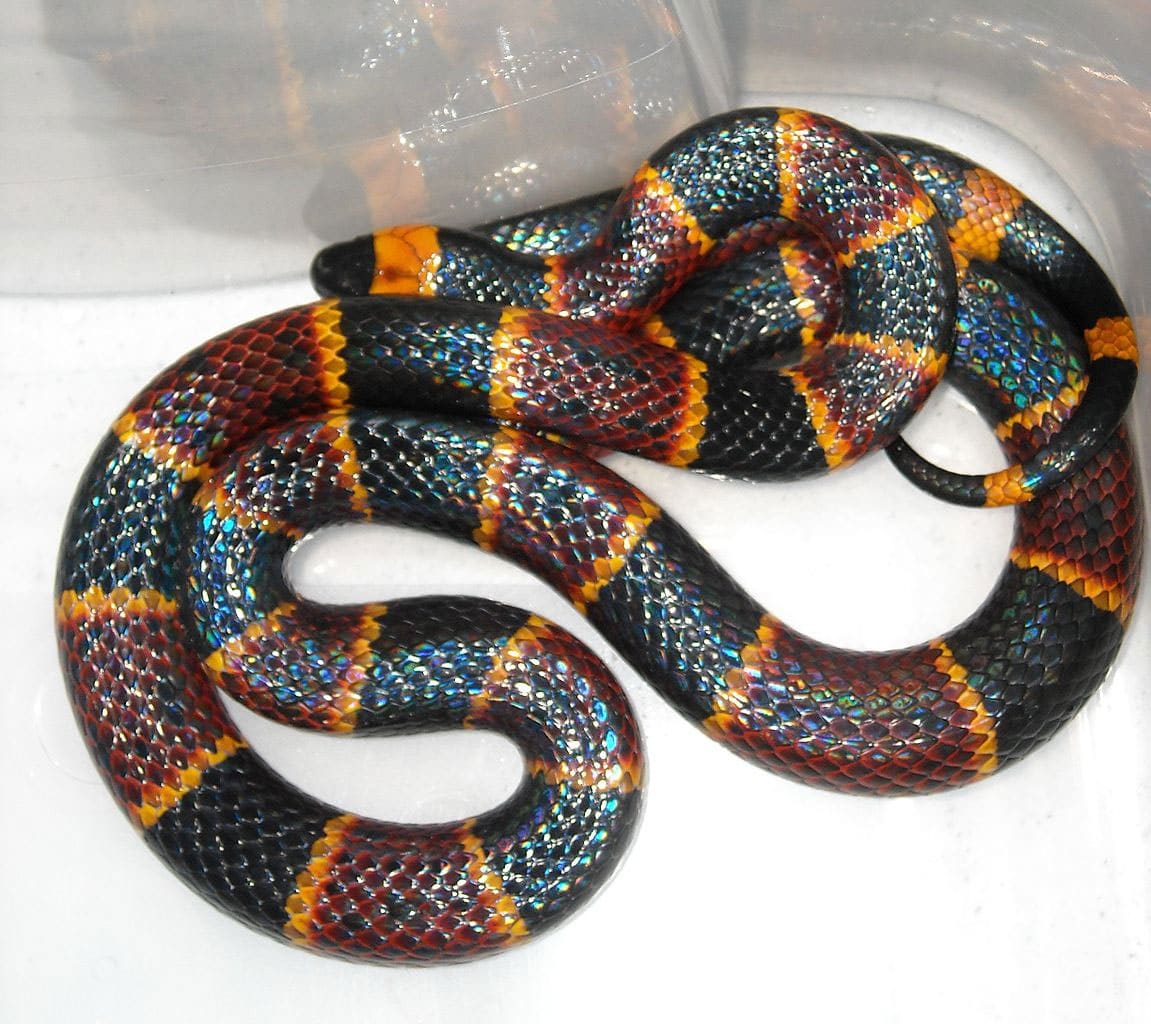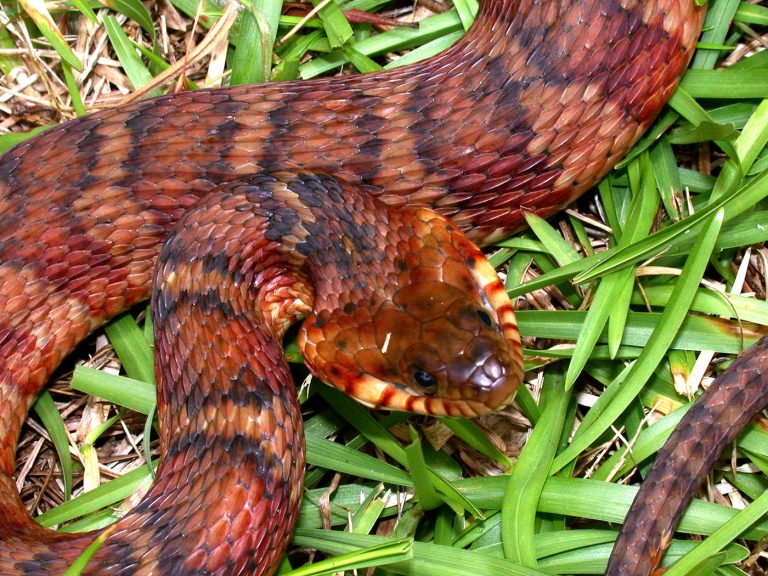Coral Snakes Rhyme
Coral snakes are a massive group of Elapid snakes, which is further divided into two separate groups, New Word Coral Snakes and Old Word Coral Snakes. The New World coral snakes encompass more than 65 identified varieties in three known genera (Leptomicrurus, Micrurus, and Micruroides). The Old World encompasses 16 species in the three genus Calliophis, Hemibungarus, and Sinomicrurus. Genetic studies show that the very base of the ancestry indicates Asian, which symbolizes the origin of the family from the old world.
Rhyme for Coral Snakes
Red Touch Yellow – Kills a Fellow Red Touch Black – Venom Lack Yellow Touches Red – Soon You’ll Be Dead
Red Touches Black – Friend of Jack
This poem on snakes helps you to recognize the venomous and deadly snakes – The poem on the snake helps to distinguish the non-venomous snakes such as a harmless scarlet king snake or a milk snake from a poisonous coral snake. Even though it is not wrong in considering all colored snakes as poisonous ones, the ambiguity has resulted in killing less harmful snakes.
Whereas the poem may have several versions, the basic idea remains unaltered.
Red Touched Yellow, Kills The Fellow
This way you recognize a coral snake. The narrow yellow bands at all times border the red bands. This poem is exclusive to the coral snake and its habitat. You can find Coral snakes of various species. Every coral snake is poisonous, whereas the colors never have any similarity. If you actually come across any kind of snake in the jungle, leave alone the multicolored snakes. Never try to prove your courage by poking them using a stick. Most snake bites occur when you stress a snake.
You can see the image of the snake’s red touching yellow in North America’s coral snake in which you notice the ‘red touch yellow’, in the poem in real. The color configuration of the milk snake and the scarlet king snake compares to that of the coral snake, but, the poisonous nature of
The coral snake is the difference. The yellow stripe is narrower than the red stripe, but they touch each other. On the poisonous variety the black stripes do not touch the red, but can touch the yellow stripes. You hardly come across a wild coral snake. They forage only during the night and early morning and at daytime they prefer to remain in their dens. Different from the other poisonous snakes, these coral snakes bite their prey and stay fixed on to them. The more time they keep their grip the more amount of poison enters into the injury. Coral snakes never inject their poison. The bags are near the fangs and not fixed to their fangs. The toxin oozes through the wound. The bites from a coral snake go unnoticed for even a day, which is hazardous, because people take it for granted, and consider that it was only a harmless milk snake bite because they did not suffer instantaneously.
White Touches Yellow
In case white touches yellow in a snake, then, is it venomous You come across thousands of varieties of snakes on earth, and in every likelihood, you may come across a white and yellow poisonous snake. The rhyme on the snake from North America has no relevance on the white patterns. The rhyme is as follows, ‘red touch black- safe for jack and Red touch yellow- kill- a- fellow’. You recognize a coral snake only by this rhyme as one among the poisonous North American snakes. It is imperative for you to believe that the poem on a snake is not applicable all over the world. There are several coral snakes having different color designs. Every coral snake is venomous. In the continent of North America, there is no snake that resembles a snake in the poem, with yellow touching white. For more information on look alike of coral snakes, you can look up the Internet. Most snakes are only temporary and transitory visitors staying only for a few hours or days. Killing the snake using a garden device is not a good idea at all. Suppose you wish to clear your premises of the snake, then either buy a trap or call a professional snake remover.
Red Touch Black, Safe For Jack.
The rhyme goes, ‘red touching black- safe for Jack,
Red touching yellow, kill a fellow.’. This is the only rhyme that will identify a coral snake, one of the deadly serpents in North America. It is important to acknowledge that the snake rhyme poem does not apply to all areas of the world. Many other coral snakes exist with many other color patterns. All of them are poisonous. The red touching yellow rhyme clearly identifies only the North American Coral Snake with the song.
In the case of red touches black, the snake is not poisonous, it is harmless. The coral snake, although it is a poisonous variety of North America, does not come under the classification as belonging to the family of pit vipers. The Coral snake does not possess pits for heat-sensing, or pupils that are slit-like nor a head in the shape of a triangle. When we portray a coral snake it is just the opposite of pit vipers, which is what created the inspiration to make a poem to differentiate the poisonous snake from their comparable non-poisonous relatives. The poem on coral snake identifies clearly the potentially dangerous North American poisonous snake. Red touch black, Safe for Jack (the snake is harmless). Red touches yellow, kills a fellow (the snake is poisonous). The coral snake possesses red stripes touching the narrow yellow stripes. Rarely does one comes across a coral snake since these reptiles like hunting early in the morning and at night. They remain secluded, even among themselves. The coral snakes remain attached to their prey when they bite and do not let the prey go. This attributes to an additional dissimilarity between the pit viper and the coral snake. Coral snakes never infuse poison; they let the poison ooze through the open cut. The quantity of venom entering the wound depends on the duration the snake attaches itself to the body of the prey.
Helping to Memorize The Color Codes of a Coral Snake

The ancient verse reads, red to black–venom lack, Red to yellow- kill a fellow This is a good way to memorize the color coding of the coral snake and does well mostly all over the US except the North Florida Keys. The coral snakes in Key Largo, for instance, the eastern coral snakes Micrurus fulvius have muted tones, the yellow circles in most of them are missing. Frequently coral snakes in Key Largo, exhibit only a single yellow ring on the back part of their head. Or else they have bands with almost dull coloration of black and red.
Another Version
The traditional poetry is Red touch yellow- kill a fellow. The nose is black, head is yellow. The coral snake has a pair of Florida look-alike, the scarlet king snake and the scarlet snake. If you compare all the three, the coral snake possesses red stripes that touch the yellow stripes and its nose is black in color. The noses of the scarlet king and scarlet snake are red in color without the red bands touching the yellow bands. Certain Coral snakes are darker in color and it is not possible to view any red color on them.
Coral snakes are small, timid and burrowing types that you usually see below rotten wood, mulch or beneath the flower pots in your garden. They even consume a smaller variety of snakes that burrow. Further, since their mouths are very small they find it hard to bite large prey. These reptiles find it hard to bite through tough clothing or strong shoes, so much so that they cannot bite a dog or a cat even if these animals bite and chew upon them.. They are incapable of striking like the vipers, yet they can be life threatening if you pick them up with bare hands.. Their fangs are very short (3-5mm) and fixed in the front. Handling a coral snake is easy using a strong leather gloves or a scoop that is made from a plastic milk jug with a cut base.

Having discovered a fondness for insects while pursuing her degree in Biology, Randi Jones was quite bugged to know that people usually dismissed these little creatures as “creepy-crawlies”.







